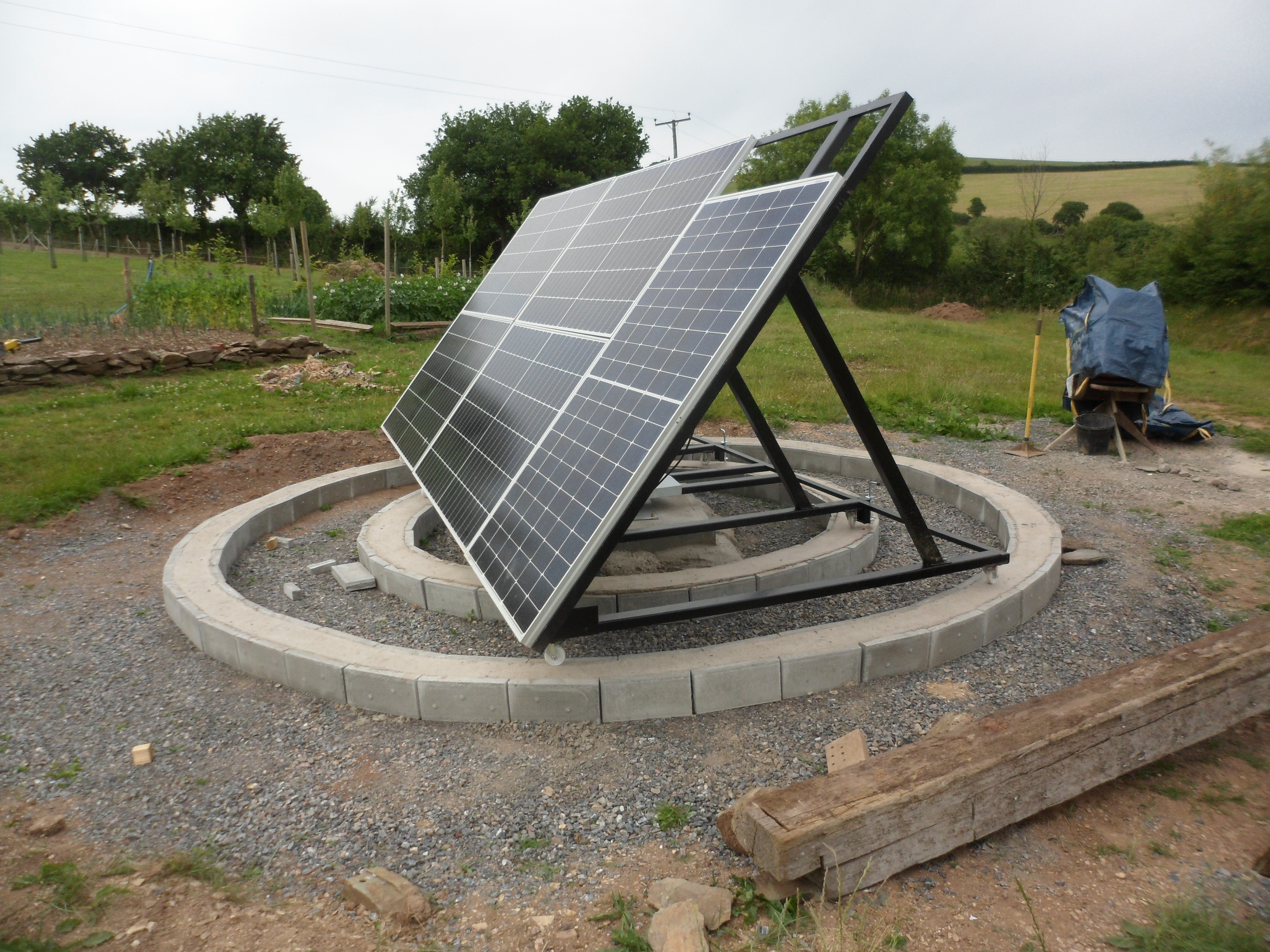I am adding a new array to our system and I want to create an add on to that array of panels that will allow the system to track the sunlight as it moves across the sky. Has anyone done this and if so, are you willing to share any information on how you set it up? What components you used and how your solar tracking system functions? Sure would be great if Victron had an add-on gadget to make this easy!
- Home
- Anonymous
- Sign in
- Create
- Spaces
- Grafana
- Node-Red
- Unsupported topics
- Questions & Answers
- Modifications
- Communauté francophone
- Deutschsprachiger Bereich
- Preguntas en Español
- Explore
- Topics
- Questions
- Ideas
- Articles
- Badges
question
DIY Solar Tilt Linear Actuator Sun Tracker Info Needed
Hi, heres a picture of one of my 2 trackers, single axis (compass point), though i have considered making 2 sets of support legs to alter inclination angle (winter/summer)
the pic shows an 1850w array, so its 4.5m wide.
the frames are from 3mm steel angle (40x40) and 3 mm channel (70x30), rotation is allowed by using stainless steel tubing with a thrust bearing and a radial bearing, the inner tube allows passage of a telephone duct to come up from the ground for the cables, both outer and inner tube are tig welded to 5mm stainless plate, the lower one is fixed to a concrete former, the upper one to the lower part of the steel frame/s.
industrial castors are used at 8 points, the castors run on the shuttered concentric rings cast in concrete.
this was not a cheap project, far from it, but if like me independence is what youre after then well worth it, the sheer delight of screwing out a few more kwh early morning and evening is pure joy as yet again your panels receive full sun.
In summer the axis of travel is 180o, in winter around 90o, i work at home so nudging them when i pass is no issue, all attempts at the hamster/methedrine auto turning have sadly failed, the hamsters go a bit wild and start smashing the place up, playing loud music and generally not applying themselves to the job
the other advantage is that as im adding more panel arrays to be self reliant in winter these arrays allow for turning the panels out of the sun when fully charged in summer...
unfortuantely the "tools required" list is a bit extreme, excavator, roller, large metal lathe, 180 amp mig plus current costs of mild and stainless steel are obscene due to natos` insistence on a rules based order that everyone else should follow... except them
challenging times, hope this helps? in terms of output i had the frames static while i was completeing the ground works and lower frames for quite a few months, i can state categorically that out put is increased 1.5 to 1,8 basic and that for myself having a steady input to meet some quite heavy consistent loads means that value to me is 3x static given that meeting ac output and maintaining a low grid set point is preferable to draining my pylons, which i feel are overstated in Ah capacity once C20 is reached... imho
lastly given some attention to levels and good engineering these are as easy to push as a pram, so i use some wedges of 6" x 4" timber in gusty conditions and in high winds (55mph so far) i actually allow them free travel at night as they behave like a sail and pitch to point of least resistance, i have also hinged them at the point the two frames meet, tho dismantling the legs during the 4 minute warning sirens may yet be a bit challenging.....

Related Resources
Additional resources still need to be added for this topic
question details
32 People are following this question.
